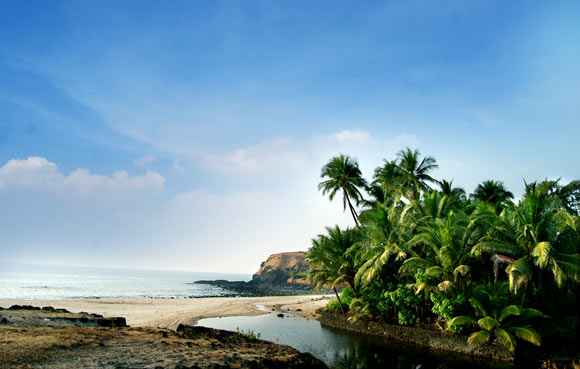Shrivardhan
Celebrated for its betel nut 'Shrivardhan Rotha', the lovely town of Shrivardhan was at one time the main residence of the Peshwas, the leaders of the Maratha Empire. The plantation of betel nut at almost every courtyard called ‘wadi’ gives it a wonderful green canopy that soothes and refreshes. A delightful bended street shaded by the general branches of banyan trees takes us to Shrivardhan, adding to the general understanding.
Shrivardhan is a taluka in the Raigad area and its place in history has been set up because of it being the first main residence of the Peshwa family. The Peshwas were the "deshmukhs" of this district and their unique surname was Bhat. The family had a major and extensive home according to their status in the public arena. Balaji Vishwanath Bhat, on the premise of his diligent work and knowledge, was depended with the "subhedari" of Pune territory. Amid the many clashes in the Maratha groups of Shahu Chatrapati and Tarabai, Balaji Vishwanath assumed a fundamental political part for the previous, and because of his conciliatory abilities he persuaded Kanhoji Angre and different commandants to join Shahu Chatrapati. Bhat was respected with the title of "Senakarte" in 1711 and later made a Peshwa. He kicked the bucket on April 2, 1720 at Saswad.
Under Bijapur, Shrivardhan was a port of result. It shows up in the records of driving European explorers. In 1538, Dom Joao de Castro depicted it as "with little water in the dock at low tide yet inside vast and open".
Shrivardhan town is without a doubt picturesque with its spread out manor of betel nut trees. With its run of the mill Konkani houses built with red tiled rooftops and the numerous Wadis off the seashore, it's a place ideal for a few days of aggregate unwinding. It is additionally effortlessly available, being only a three to four-hour drive from Mumbai and Pune. The sanctuary town of Harihareshwar is close-by and the closest railhead is Mangaon, 45 kilometers away. Being a prominent visitor site, there are all that anyone could need hotel and boarding offices at Shrivardhan. The closest MTDC resort is at Harihareshwar.
How to reach:
By Rail:
Nearest railhead is at Mangaon. Few of the trains running on Konkan Railway stop there.
By Road:
Take NH-17 from Mumbai through Nagothana, Kolad, Mangaon, Mhasala, Vadavali, and Borli Panchatan. From Pune drive through the picturesque Tamhini Ghat, Mangaon, Mhasala, Vadavali and Borli Panchatan.
Shreevardhan is 180 kilometers from Pune. There are ST buses that go directly to Shreevardhan from Mumbai and Pune and Mangaon.
Places to Visit:
Suvarna Ganesh Temple is a Lord Ganesha temple at Diveagar near Shrivardhan where the deity is a self-incarnated Ganesha idol.
Diveagar Beach is an idyllic beach with a long stretch surrounded by Casuarina trees. Watersports are available here (parasailing, banana ride, ATV ride, horse ride, camel ride).
Harihareshwar Temple lies right next to Harihareshwar beach and is considered one of the holiest pilgrimages for Hindus and therefore referred to has Dakshin Kashi. The temple has deities of Lord Vishnu and Lord Shiva and even has footmarks known as Vishnu Pad (Footsteps of Lord Vishnu himself) near the beach.
Shrivardhan beach is one of the prominent attractions of the town. Unspoilt, clean and relatively less crowded, it is one of the popular beaches in Maharashtra. One can find water sports activities like boating and sailing. It is also an ideal place for swimming as the waters are shallow.
Peshwa Memorial built in honour of the Peshwas of the Maratha Empire. The statue of Balaji Vishwanath, the first Peshwa, was built in 1988.
Ganesh Gully is a place which is same as per the name. There is a very narrow and about 3 feet wide culvert located in the hilly area of Harihareshwar which is assumed as the holy alcove around 30 feet under the waterway. According to mythology, people believe that Lord Ganesha has his throne inside the niche.
Best Time to Visit:
October to March are the best months to visit Shrivardhan when the hot climate is a bit at rest. The Diwali and Shiv Ratri celebrations at some stage in this period together with Ganesh Chaturthi in September could make a visit to Harihareshwar a greater mesmerizing one. The summers are pretty hot, accompanied by means of a humid monsoon and pleasantly cool winters.
Your one stop gateway for all the Activities in Konkan, Hotels in Konkan, Best places in Konkan, Konkan tour packages and Places to visit in Konkan.



Comments
Post a Comment